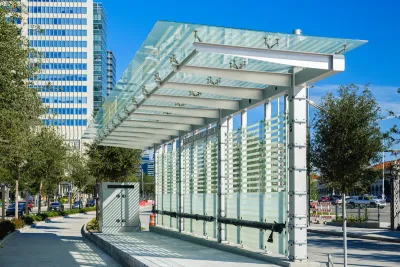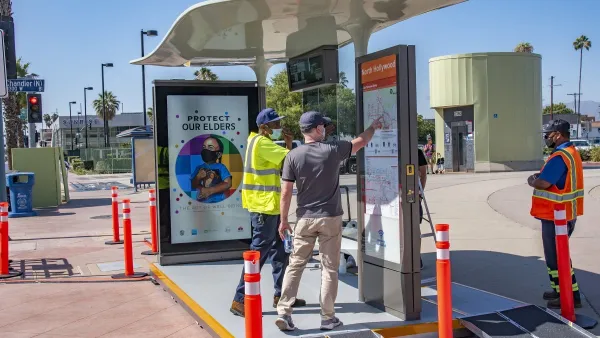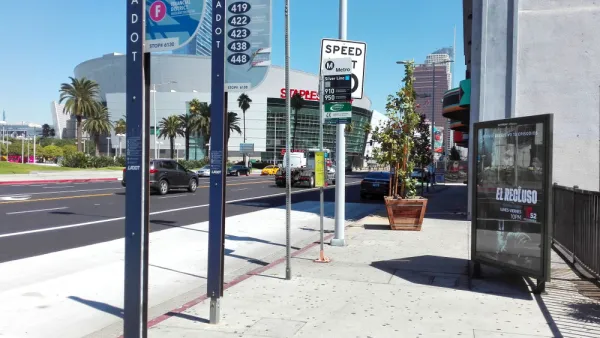The agency is working on designs for a bus stop shelter with built-in solar-powered fans to keep waiting riders cool.

“A prototype shelter aimed at addressing some of Houston’s unique needs, including solar-paneled fans, could evolve into new structures at many Metropolitan Transit Authority bus stops,” reports Dug Begley in the Houston Chronicle.
Protection from sun and heat at transit stops can be crucial in cities like Houston as heat waves grow longer and more intense, but only 3,350 of Houston’s operational bus stops have shelters. “In downtown and many areas funded with management districts, bus shelters can be spacious, shady locations with benches. In tree-line neighborhoods, stops can be shady even if they are uncovered. Along some streets in Denver Harbor, Acres Homes, the bus stop is nothing more than a sign on a stick next to a drainage ditch on the side of the road.”
Now, the agency is developing designs for a bus shelter that will help riders keep cool in the brutal Houston summers. The solar panels used to operate the fans could also power lighting and arrival time screens.
Metropolitan Transit Authority Chief Operating Officer Chuck Berkshire says the agency has been testing one design and is already planning changes. “The focus will be on getting one shelter designed and built, then modify from there, Berkshire said, for situations where a shelter might need to be smaller to fit along a certain sidewalk segment or have two-seat benches instead of three to accommodate a wheelchair user.”
With enough planning, Houston might avoid the derision aimed at L.A.’s Metropolitan Transportation Authority earlier this year, when the agency unveiled a shade structure dubbed ‘La Sombrita,’ widely criticized as a minimally effective effort that highlights the outsized obstacles posed by the city’s building code.
FULL STORY: Metro testing solar powered fans in future bus shelters

National Parks Layoffs Will Cause Communities to Lose Billions
Thousands of essential park workers were laid off this week, just before the busy spring break season.

Retro-silient?: America’s First “Eco-burb,” The Woodlands Turns 50
A master-planned community north of Houston offers lessons on green infrastructure and resilient design, but falls short of its founder’s lofty affordability and walkability goals.

Delivering for America Plan Will Downgrade Mail Service in at Least 49.5 Percent of Zip Codes
Republican and Democrat lawmakers criticize the plan for its disproportionate negative impact on rural communities.

Test News Post 1
This is a summary

Test News Headline 46
Test for the image on the front page.

Balancing Bombs and Butterflies: How the National Guard Protects a Rare Species
The National Guard at Fort Indiantown Gap uses GIS technology and land management strategies to balance military training with conservation efforts, ensuring the survival of the rare eastern regal fritillary butterfly.
Urban Design for Planners 1: Software Tools
This six-course series explores essential urban design concepts using open source software and equips planners with the tools they need to participate fully in the urban design process.
Planning for Universal Design
Learn the tools for implementing Universal Design in planning regulations.
EMC Planning Group, Inc.
Planetizen
Planetizen
Mpact (formerly Rail~Volution)
Great Falls Development Authority, Inc.
HUDs Office of Policy Development and Research
NYU Wagner Graduate School of Public Service





























